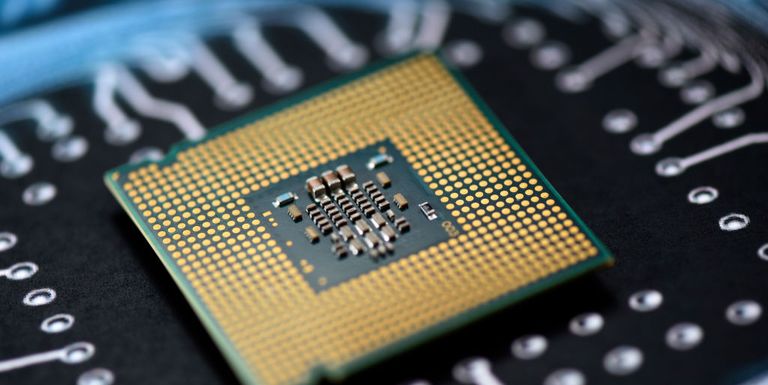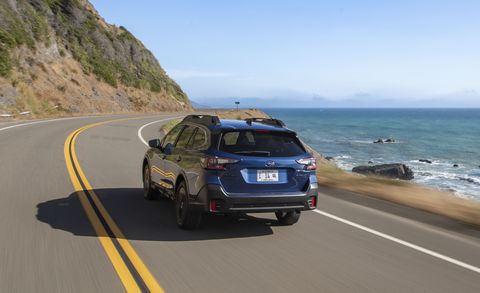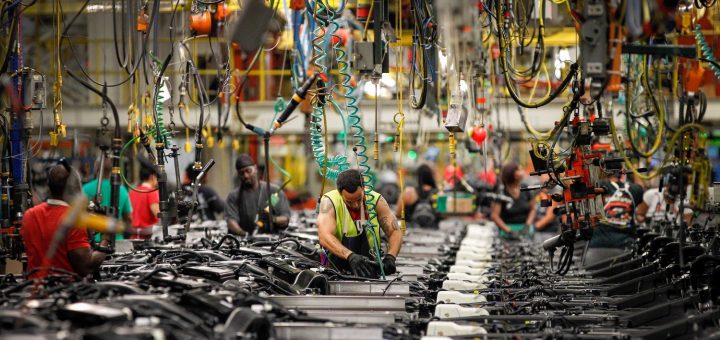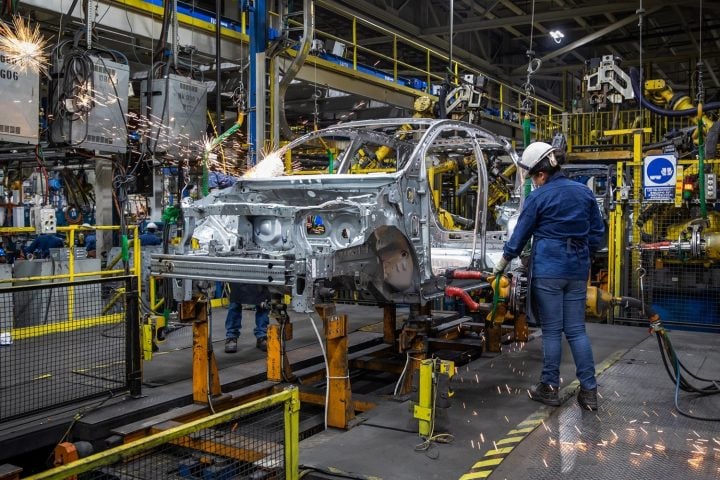Making chips is hard
When the pandemic arrived, the demand for computers and other electronics skyrocketed as many people shifted to working, learning, and playing at home. Like many other manufacturers, chip producers also had to adapt and in some cases close down their facilities due to Covid-19 safety measures. Because chip manufacturing is a long, complex process — the Semiconductor Industry Association says lead times for semiconductor orders can be as long as 26 weeks — surging demand and limited supply have caused ripple effects that the manufacturers and customers are still feeling a year later.
“Making a semiconductor is perhaps the most highly complex manufacturing process on the planet,” Falan Yinug, SIA’s director of industry statistics and economic policy, told Recode. “It can involve more than a thousand process steps and hundreds of advanced machines needed to pack tens of billions of transistors on a chip the size of a quarter.”
Then there’s the fact that only a few existing manufacturers, such as Intel and Samsung (which helps make chips for companies like Nvidia), currently have the capacity to produce these semiconductors. Complicating chip supplies even further are limits the Trump administration placed on the largest China-based chip manufacturer, SMIC, amid ongoing trade tensions. Now, without enough semiconductors to meet global demand, we’ve seen shortages in chips needed for everything from PlayStations to Ford F-150s. In April, Nikkei reported that the chip shortage was even delaying production of Apple’s MacBook.
Some automakers are facing even worse delays because of decisions they made in the pandemic. When Covid-19 first arrived, some carmakers gave up their spot in line to buy semiconductors, in anticipation that the economic downturn would reduce demand for vehicles. At the same time, device makers that saw a surge in demand for their tech rushed to pick up chip orders that would have otherwise gone to the automakers.
A year later, there’s now much greater demand for cars, and companies like GM and Honda want more chips so they can increase their production. But now, these automakers are not only competing with increased demand for chips from device manufacturers, but also facing monthslong delays for their own orders. “Fast forward, May hits, and then the automobile plants are back online, and then they start placing orders,” explained Patrick Penfield, a supply chain professor at Syracuse University. “But now you have a hole in the pipeline.”
Now, the chip shortage is holding up production lines in car and truck plants. As a result, some autoworkers are idle, and some have even been laid off. That’s only fueled concern among US politicians and some industry leaders about the US’s relatively meager domestic manufacturing capacity for these chips, and high-tech manufacturing more broadly. Senate Majority Leader Chuck Schumer recently warned, “Semiconductor manufacturing is a dangerous weak spot in our economy and in our national security.”
Just 12 percent of global chip manufacturing is now based in the US, compared to the 37 percent share that the country had in 1990, according to research SIA conducted with the Boston Consulting Group. The primary reasons for this decline are, according to UCLA supply chain professor Christopher Tang, the low cost of production in other countries and chemical processes with less stringent regulation abroad.
“We never had a coordinated plan, meaning these are free markets. So any companies can ship anything outside the country,” Tang explained. “So now is a wake-up call. We have shifted virtually everything, so now it’s an empty vault.”
There are many ideas for how to boost high-tech manufacturing in the US. Some, like Tang, say that part of the key is boosting the number of US students who study STEM and creating more high-tech jobs in the field. Another strategy up for consideration is beefing up US “industrial policy,” which would have the government take a more active role in encouraging high-tech industries in the US, whether through tax benefits, direct investment in research, or government subsidies. In his presidential campaign, Biden even proposed wielding the government’s power to buy these supplies directly from US manufacturers. Now with his supply chain review, Biden appears to be taking a first step toward pursuing that goal.
Biden wants to see how high-tech American manufacturing can be
Biden’s supply chain review is a first step toward better understanding what the weaknesses in US supply chains are, before starting the more costly process of what to do about it.
“In general, we are vulnerable to disruptions on global interconnected supply chains. What are the solutions to that?” said North Carolina State engineering professor Julie Swann. “First, understand your supply chain, right? Know where your risks are, so that you’re not caught unawares when it happens. And that requires, really, a deep dive in many different industries.”
In part, a Biden administration official told Politico, the goal is to ensure that the US isn’t too reliant on other countries and to make US-based supply chains more resilient. In his executive order calling for a review, Biden mentioned everything from another pandemic to a cyberattack to “climate shocks and extreme weather events” as examples of crises that could make it more difficult to get much-needed supplies in the future.
The supply chain review will be comprehensive. Over the course of the review — which is currently ongoing — the heads of several government agencies will reach out to industry stakeholders, researchers, NGOs, labor unions, and regional and local governments to study the supply chain. The Commerce Department, which is leading the semiconductor supply chain review, is soliciting public comment on all sorts of detailed questions about US chip manufacturing, from the location of chip manufacturing assets to the risks climate change could pose to chip production, as well as the risks faced if the US doesn’t boost its manufacturing capabilities in time.
In a few weeks, the Commerce Department is expected to submit to Biden its first report on the supply of semiconductor chips. Next year, it will submit an even broader report covering “critical sectors and subsectors of information and communications technology.”
“They’re going to be doing a thorough review of what are we able to do here: What are we already doing here versus what can we do here,” Ozkul, the supply chain expert, explained. That could be pretty difficult. Research firm McKinsey has noted that the average large company has more than 5,000 suppliers.
Even securing enough specialists to build a particular part of a device can be a challenge, as Willy Shih, a management practice professor, explained in Harvard Business Review last year. A typical laptop might require an LCD panel made by just a handful of billion-dollar facilities in Asia, as well as chips made by Intel that may be produced in the US but need to travel abroad for packaging. “The end result is that we have many suppliers scattered around the world upon whom manufacturers depend for critical components,” Shih explains, which makes it very hard for a manufacturer to be completely self-sufficient in a single country.
Following the supply chain review, the goal isn’t necessarily that the US produces all or even most of a particular product or its subcomponents, experts told Recode. Instead, it’s about making sure the country has stockpiles; coordinated supply chains of needed supplies and components from different parts of the world; and enough domestic manufacturing to ensure the US can weather another crisis.
But the task of building new high-tech manufacturing in the US would be a tall order. For instance, a 2017 deal then-President Donald Trump organized with the electronics giant Foxconn to build a massive LCD factory in Wisconsin — and create 13,000 jobs — turned out to be a dud. The billions of dollars in public investment for the Foxconn plant have resulted in just a fraction of the jobs originally promised and mostly empty buildings, though the company now says it might start building electric vehicles for Fisker there.
Meanwhile, provisions in the most recent National Defense Authorization Act have authorized the government to provide potentially billions in incentives for chip manufacturing in the US. Leaders of the chip industry are now urging Biden to fund these efforts, and members of Congress are considering next steps. Biden has said he’ll push for $37 billion for the effort. But boosting tech manufacturing in the US isn’t as simple as spending billions of dollars, canceling contracts around the world, ditching the global suppliers, and suddenly having a bunch of new jobs available to US workers.
“Before you blow up the old bridge, make sure you build a new bridge,” Tang said. “Make sure the new bridge is tested, and keep the old bridge running.”
Thanks for reading about the Chevrolet chip shortage. For more information visit https://www.vox.com/recode/22336388/gm-chip-shortage-ford-semiconductors-biden
Open Sourced is made possible by Omidyar Network. All Open Sourced content is editorially independent and produced by our journalists.













/cdn.vox-cdn.com/uploads/chorus_image/image/69010617/GettyImages_1149496122.0.jpg) Even a year after the pandemic started wreaking havoc on global supply chains, a chip shortage is still disrupting entire industries.
Even a year after the pandemic started wreaking havoc on global supply chains, a chip shortage is still disrupting entire industries.
 “Semiconductor supply for the global auto industry remains fluid,” GM said in a statement earlier in February. “Our supply chain organization is working closely with our supply base to find solutions for our supplier’s semiconductor requirements and to mitigate impacts on GM.”
“Semiconductor supply for the global auto industry remains fluid,” GM said in a statement earlier in February. “Our supply chain organization is working closely with our supply base to find solutions for our supplier’s semiconductor requirements and to mitigate impacts on GM.”